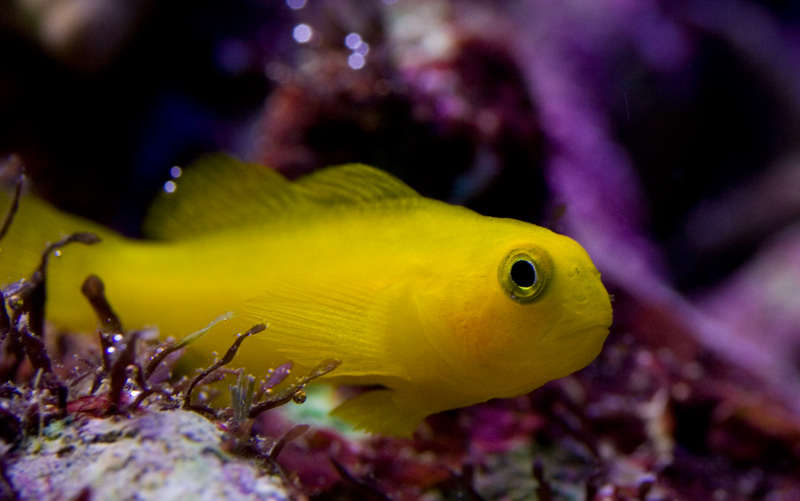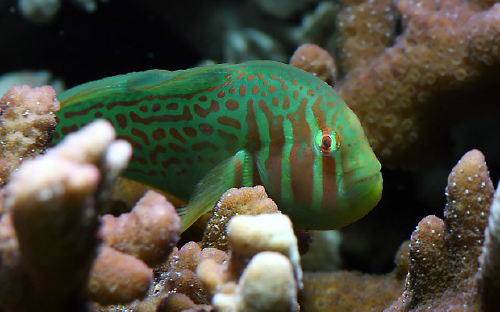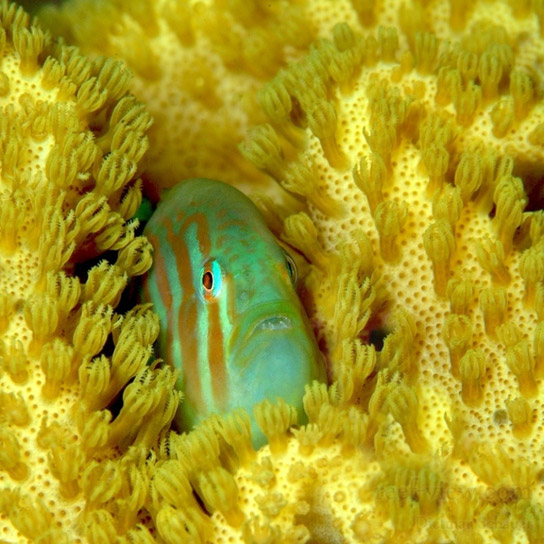Clown Goby Symbiosis

image via anters.wordpress.com
You have seen them at the pet store,or even own one or two of your own. For a cheaper fish they are quite cute and peaceful, unlike most Damselfish. They get their name from their similar body shape to the clownfish. Like the clownfish they also have a symbiotic relationship with something most people would not expect, not to mention the way they operate together is quite astounding. If you have seen this before you know I am referring to Acropora.

green clown goby image via aquadaily.com
At the Georgia Institute of Technology a group of researches discovered that there was a lot more going on with this relationship than met the eye. At first it seemed the SPS coral was simply a place to seek shelter for the Clown Goby but with scientists at work this was soon a much more biologically interesting situation.
As you know, corals are known to have various chemicals that they can expel. Some of it is used to fend of predators, others are used to kill nearby corals, and some are even used during spawning. The acropora can actually send out a “smell of distress” to the Clown Goby who will respond faster than your local fire department when your cat is stuck in a tree.
THE EXPERIMENT
The Acropora nasuta and the Green Clown Goby were put into a tank, along with various other known symbiotic pairs. During the experiment, a toxic seaweed called Chlorodesmis fastigiata was situated so that it was touching the acro, which if left untouched will kill the coral. The clown goby would spend his days exploring the tank but within minutes of contact the fish would be back at the acro. The goby (or gobies) would then clean the seaweed off the coral until it was safe again. This then spawned the idea for the next tests to further understand how the gobies knew the Acro was in distress.
There were three water samples taken during this event. One from the seaweed’s original location, one from where it is near the coral, and one from the water around the coral during its distress. The three samples were added to the water at different times. The only samples that made the gobies react were the ones that were taken near the corals, which would show that the coral is putting out a chemical call for help rather than the toxic seaweed being the reason the fish respond, though some will actually eat the stuff while others will just rip it off and spit it out. Though this is barely a sliver of information, it is a step towards understanding the sea and using the information to help it any way we can, even if it means keeping our own little oceans healthy.
This goes without saying, but I am going to say it anyway: Every animal on our planet has a purpose, even a mosquito. No animal is too small to have a purpose. So what does this mean for our reef tank? If you are an SPS lover and have a fear of Acros in distress you can get your self an awesome little body guard, and they even live in groups! The Clown Goby is truly a fish worth a second look.
To comment and see what others are saying about this topic please click here!

image via scitechdaily.com
Comments are closed.
